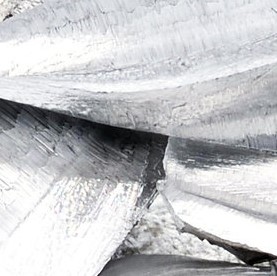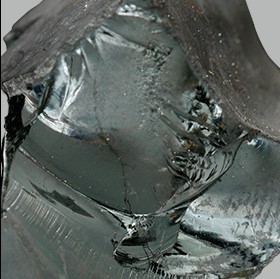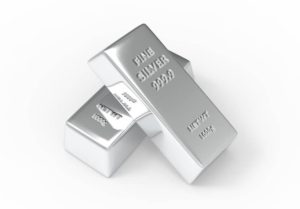What are solar panels?
Solar panels are devices that convert sunlight into electricity.
They are made up of a series of individual solar cells, which are connected together to form a larger panel. Solar panels can be used to power a variety of devices, from small electronic devices to entire homes and businesses.
How are solar panels made?
Solar panels are made up of a series of individual solar cells, which are connected together to form a larger panel.
Solar cells are made from a material called silicon, which is a semiconductor.
When light hits the silicon, it causes electrons to be knocked loose from the atoms of the silicon. These electrons flow through the material to create an electric current. The current can then be used to power electrical devices.
Solar cells are usually arranged in a grid pattern on a solar panel. The more solar cells that are used, the more electricity the panel will produce. Solar panels can be made in a variety of sizes, depending on the needs of the user.
Reducing the use of fossil fuels
Many people are choosing to install solar panels on their homes and businesses in order to reduce their dependence on fossil fuels and lower their energy costs. Solar panels can also help reduce greenhouse gas emissions, which contribute to climate change.
Solar panels are a clean and renewable source of energy, and their use is increasing rapidly around the world. With continued research and development, solar panels are expected to become even more efficient and affordable in the future.
The benefits to the environment
Solar panels are a great way to reduce your reliance on fossil fuels. Fossil fuels like coal and oil produce harmful emissions like carbon dioxide and sulphur dioxide that contribute to climate change.
Solar energy doesn’t produce any emissions, so it’s a clean and renewable source of energy. Solar panels are also becoming more affordable as the technology improves.
Precious metals used in Solar Panels
There are a few different types of precious metals that are commonly used in solar panels, including silver, gold, and platinum.
Each of these metals has unique properties that make it ideal for use in solar panels. Silver is the best conductor of electricity of all the metals, so it is often used as an electrical contact material in solar panels.
Gold is a very good reflector of light, so it is often used on the backside of solar cells to help reflect sunlight back into the cell. Platinum is a very stable metal, so it is often used as a catalyst in solar cells.
These metals are effective at absorbing light because they have a low resistance to electricity. By using these precious metals, solar panel manufacturers are able to create panels that are more efficient at converting sunlight into energy.
Silicon in Solar panels
The majority of solar panels use silicon to convert sunlight into electrical energy. Silicon is a valuable resource, and there is a limited amount available on Earth.
The materials used in solar panels are silicon, cadmium telluride, and copper indium selenide/sulphide. These materials are semiconductors, meaning they can create an electric current when exposed to sunlight.
Copper helps to conduct electricity, while silver and indium tin oxide help to reflect light. All of these materials are necessary to create a functional solar panel.
Some other materials that are used in solar panels include:
 Aluminum
Aluminum
 Gallium
Gallium
 Indium
Indium
 Copper
Copper
 Selenium
Selenium
All of these materials are considered precious metals because they are rare and have high values. Collectively, the cost of the raw materials in a solar panel can be significant. It is important to consider this when calculating the return on investment for a solar panel system.
Renewable energy
Solar panels are a clean and renewable source of energy. They don’t produce pollution or greenhouse gases, and they can be used to power homes, businesses, and even entire cities.
Solar panels are becoming more and more popular as the technology improves, and the cost of solar panels comes down.
There are also several metals and minerals that help solar panels work. Cadmium Telluride is a very efficient solar cell material.
Vital Components in solar panels
Silicon is the main component of solar panels and is responsible for converting the sun’s energy into electrical current.
Copper is used to create the electrical wiring in solar panels and helps to move the current around.
Gallium is a soft metal that is used in the making of LED lights and helps to improve the efficiency of solar panels. Germanium is also used in LED lights and helps to optimize the energy conversion process in solar panels.
All of these metals and minerals are important in the making of solar panels and help to make them work effectively.

Silver Solar Demand
Solar demand for silver is forecast to rise 20% this year, reaching a new record high of 1,070 million ounces, according to the latest report from the Silver Institute.
The rapid growth in solar power installations is driving the increase in silver consumption, as photovoltaic (PV) panels contain about 60 grams of silver per megawatt (MW). That’s up from 50 grams a few years ago and is expected to reach 70 grams by 2022.
China is the world’s largest market for solar energy, accounting for nearly half of the global installed capacity last year.
The United States is a distant second, with about 10% of the world total. The growth in solar demand is good news for silver miners.
How Much Silver Does a Solar Panel Use?
In order to create a solar panel, you need about 20 grams of silver. That’s because silver is the best conductor of electricity. It also doesn’t corrode, which is why it’s used in coins and jewelry. So it’s a good material for solar panels too.
Solar panels are made up of lots of little cells. Each cell has a positive and negative terminal, and when the sun shines on them, the cells create an electric current. The current flows through the silver in the panel and into an inverter, which converts it into usable AC power.
If you have a solar panel on your roof, chances are it contains silver. And that’s a good thing! It means your panel is helping to reduce greenhouse gas emissions and save you money on your electric bill.
How Much Silver is Used by the Solar Industry?
The solar industry is growing rapidly and with that growth, the demand for silver used in solar panels is also increasing. It has been estimated that the solar industry will use about 54 million ounces of silver this year. That’s a lot of silver!
Most of the silver used in solar panels is actually recycled from other products. This helps to reduce the environmental impact of producing solar panels and also helps to keep the cost of solar energy down.
So, next time you see a solar panel installation, take a moment to appreciate all the silver that’s going into it!
Below are the Top 4 Precious Metal firms that we have chosen, as being amongst the most reputable Gold IRA companies in the industry.
Click here to read our reviews

|
The Bottom Line
Precious metals are used in solar panels, but not for the reasons you might think.
While silver and gold may be thought of as valuable because they are rare and beautiful, these metals have other properties that make them ideal for use in solar cells.
Silver is a good conductor of electricity, which makes it useful in solar panels. Gold is also a good conductor of electricity, but it has another important property-it doesn’t corrode.
This means that gold can be used to coat the electrodes in a solar cell, preventing them from corroding and losing their electrical connection over time.
Precious metals are used in solar panels to create a semi-conductor. This is done by using a thin film of metal that has been deposited onto a substrate.




